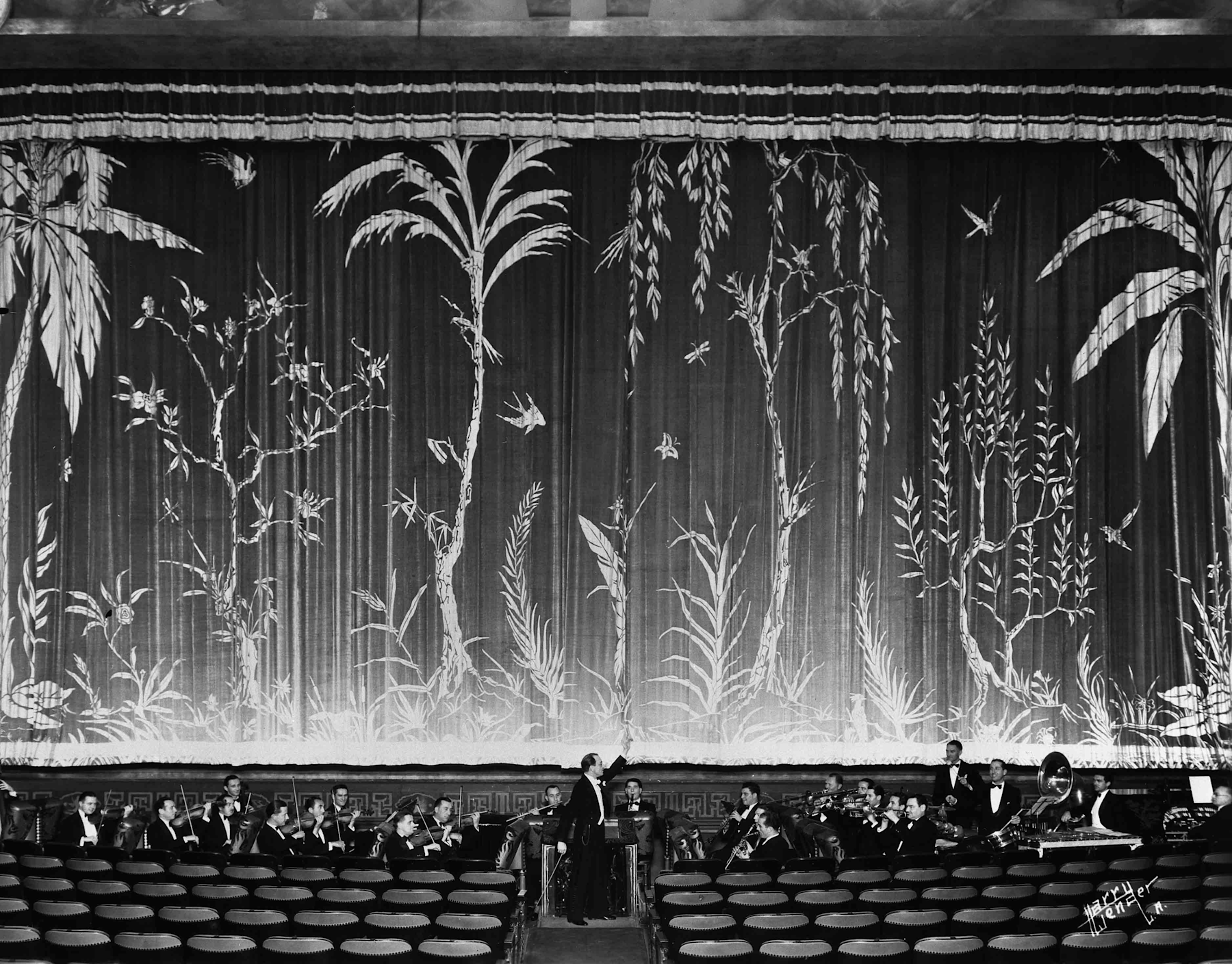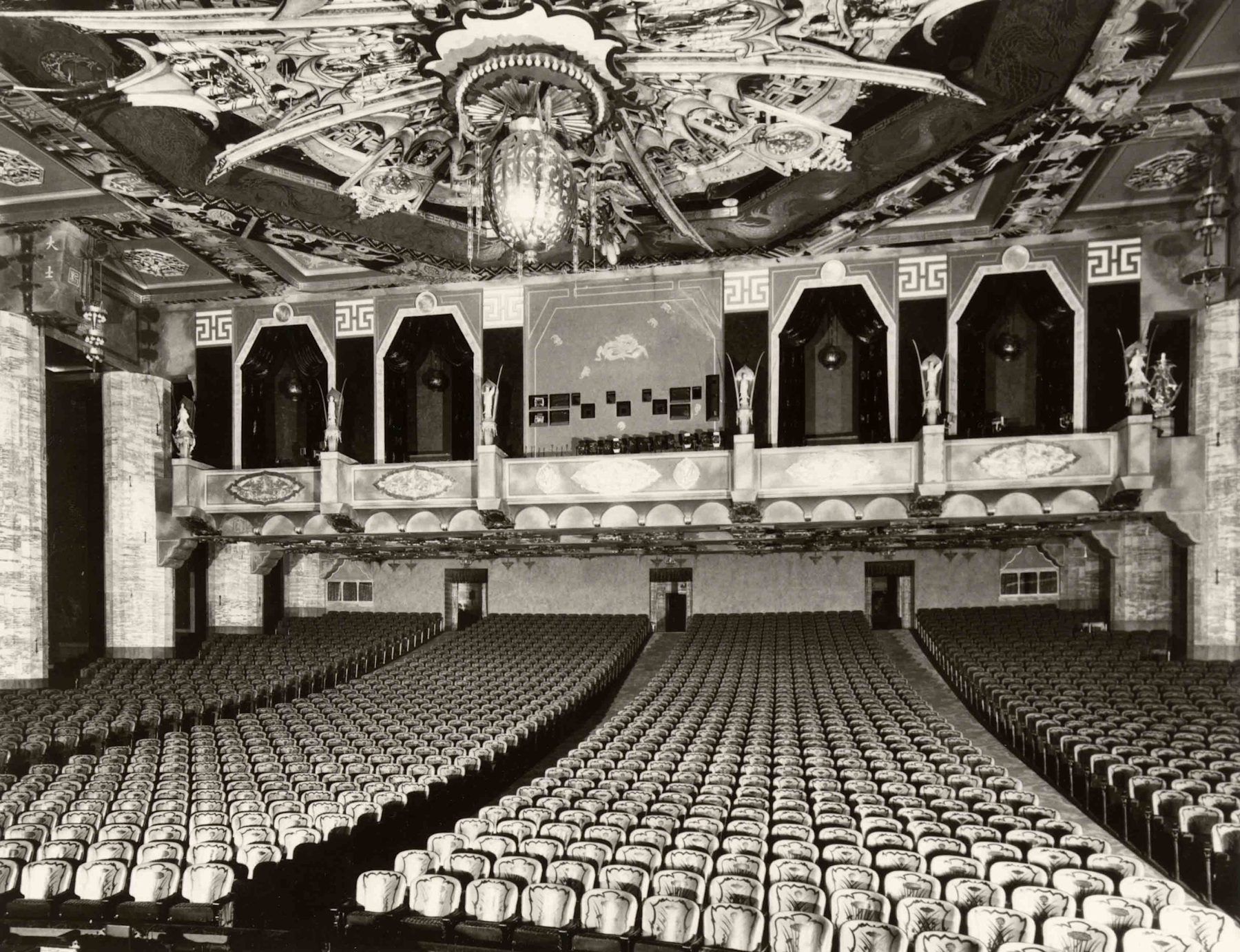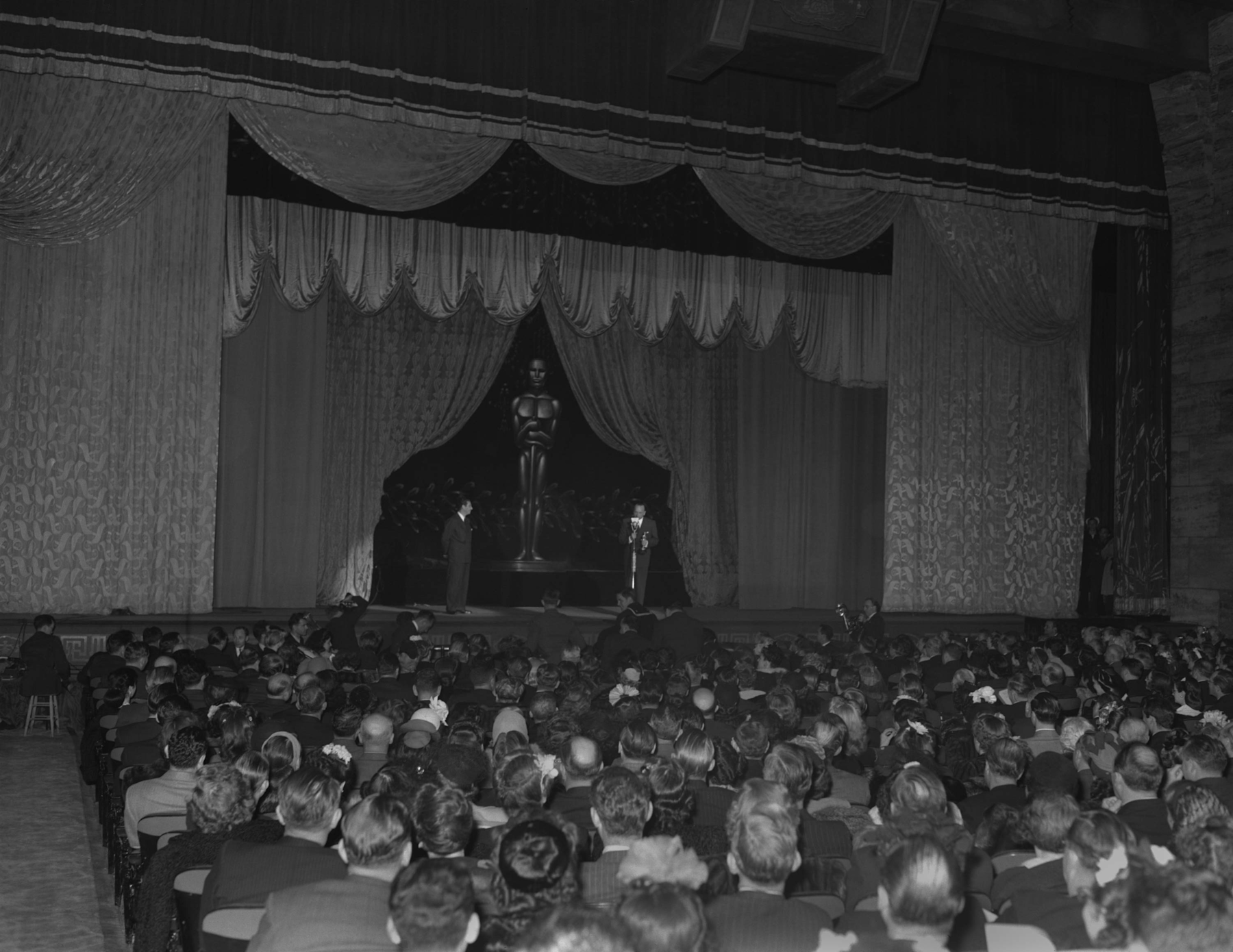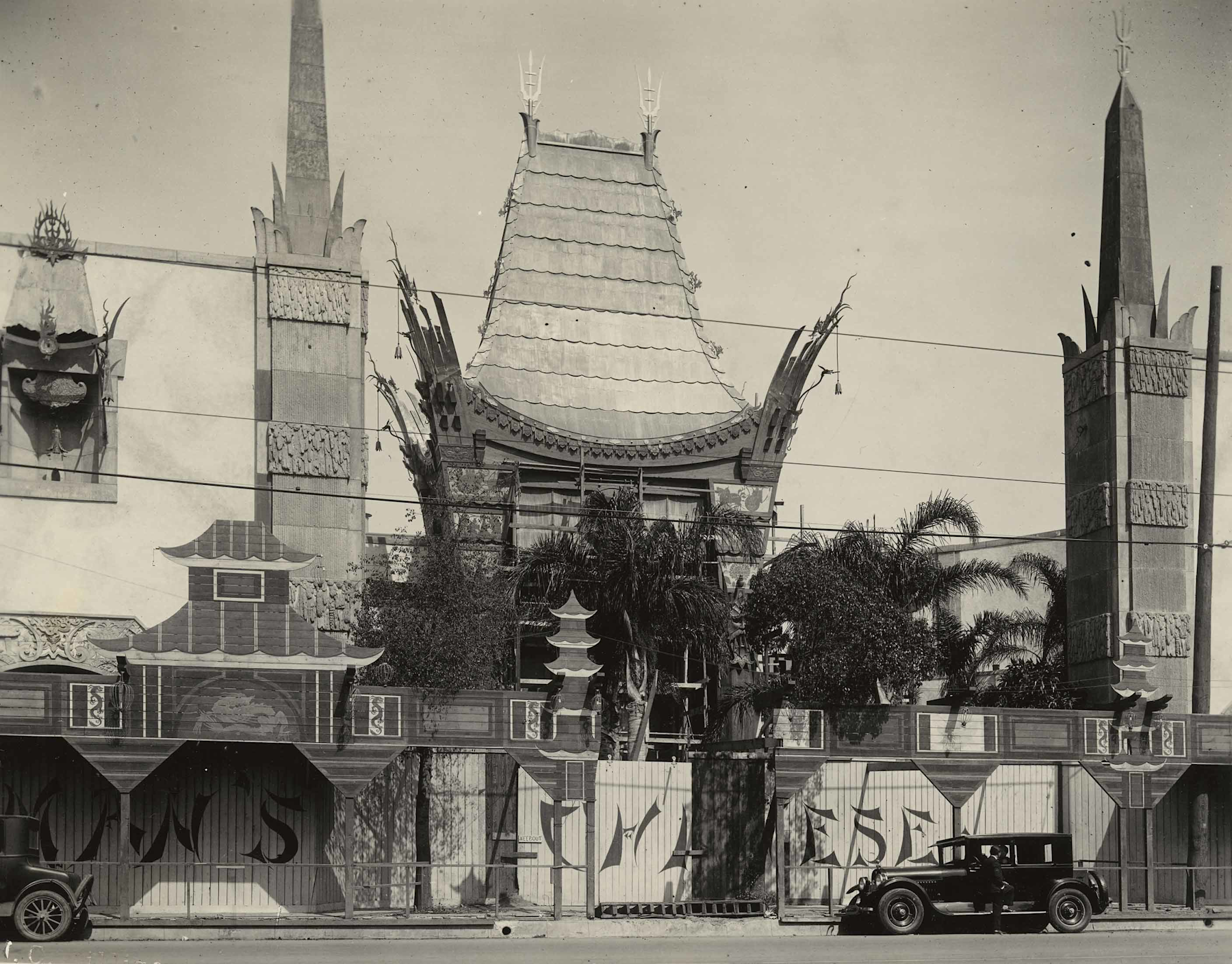For almost a century, Grauman’s Chinese Theatre, now the TCL Chinese Theatre, has been the beating heart of Hollywood tourism. The venue, named for its giant Chinese pagoda structure, hosted the Academy Awards from 1944 to 1946. The Chinese Theatre is still a working cinema, long known for its larger-than-life film premieres and uniquely extravagant moviegoing experience. Additionally, the Chinese Theatre offers a personal encounter with film history through the iconic hand- and footprints left by Hollywood stars in the cement out front from the 1920s to today.


Images: (left) The exterior of the Chinese Theatre on May 27, 1930, during the world premiere of Hell’s Angels (USA, 1930). Courtesy of Howard Hughes collection, Margaret Herrick Library, Academy of Motion Picture Arts and Sciences; (right) TCL Chinese Theatre. Photo by Joshua White, JWPictures/©Academy Museum Foundation
In the 1920s, businessman and entertainer Sid Grauman owned theaters and movie palaces across the country, including the Egyptian Theatre on Hollywood Boulevard and the Million Dollar Theatre in downtown Los Angeles. Grauman first leased the land where his Chinese Theatre would eventually stand from silent film star Francis Xavier Bushman, who owned a mansion on the site. Working with businessman Joseph Schenck and Hollywood power couple Mary Pickford and Douglas Fairbanks, Grauman built the theater for $2 million, or what would be roughly $30 million today.
Like the neighboring Egyptian, the Chinese Theatre was built in the Exotic Revival style, this time with a dramatic, fanciful interpretation of Chinese art and architecture. Raymond Kennedy of the Meyer & Holler firm designed the Theatre’s striking pagoda, supported by two massive coral-red columns and a 30-foot-high stone dragon. Though the approach to Chinese architecture was fundamentally ersatz, many multi-talented Chinese Americans working in Hollywood produced key features of the building. Director Moon Quan designed and collaborated with Chinese artisans to create many of the Theatre’s statues, and actor Keye Luke painted the murals decorating the lobby.






Grauman famously said that moviegoers deserved a “theatrical dinner, not just popcorn,” and the elaborate productions he staged during the early years of the Chinese Theatre offered just that. Films opened with custom variety shows directed by Grauman, many featuring a 65-piece orchestra. The second film ever to play at the theater, The Gaucho (USA, 1927), opened with Douglas Fairbanks playing the cowboy character on stage before appearing in the movie itself.
The Theatre was also known for its grand premieres, as with the launch of the wartime epic Hell’s Angels (USA, 1930). Expectant fans lined up a mile and a half down Hollywood Boulevard to witness the extravaganza outside the Chinese Theatre that included World War I biplanes buzzing overhead, actors parachuting down to the street, and a fireworks display.
The collection of cement hand- and footprints outside the front entrance is perhaps the best-known feature of the Chinese Theatre, however. Accounts vary, but the most cited version of the origin story for the prints involves Grauman and actress Norma Talmadge accidentally stepping in wet concrete during the Theatre’s construction. The oldest official prints are from 1927 and belong to Douglas Fairbanks and Mary Pickford, but the forecourt now features hundreds more. Marilyn Monroe even famously left an earring in cement when making her handprints at the premiere for Gentlemen Prefer Blondes (USA, 1953).
The Theatre’s portfolio of prestige Hollywood events grew to include the Academy Awards in 1944. As World War II intensified, the dinner and dancing format of the Oscars ceremony felt out of sync with the national mood. The event moved from the Ambassador Hotel’s Cocoanut Grove nightclub to the Chinese Theatre in 1944, where it stayed for three years. Guests wore modest outfits or military dress uniforms, the ceremony was transmitted by radio to Allied troops overseas, and active members of the armed services were invited to the show, many of whom were seated on stage.
This was also the year the Best Supporting Actor and Actress awards first took the form of full-size statuettes rather than plaques. However, because of the wartime metal shortage, all the statuettes awarded 1943–1945 were made of plaster and sprayed with bronze lacquer, with winners receiving IOU’s promising traditional bronze statuettes once the war was over. Casablanca (USA, 1943), with its story of a complex American patriot sacrificing love and livelihood for the Allied cause, swept at the 16th Academy Awards, winning the awards for Best Picture, Directing, and Screenplay.